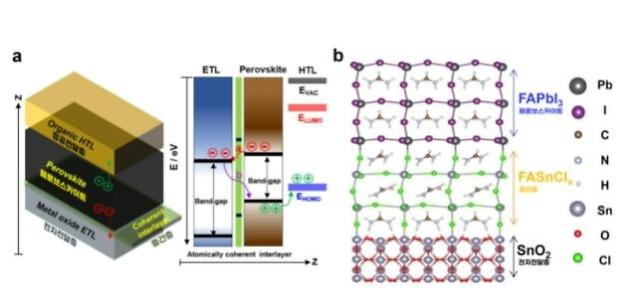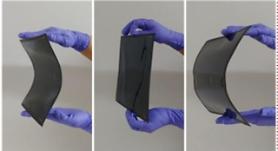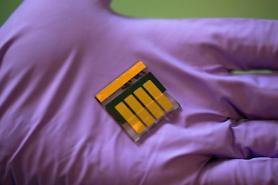
[Courtesy of Ulsan National Institute of Science and Technology ]
SEOUL -- South Korean researchers have set a new record of 25.8 percent in the power conversion efficiency of perovskite solar cells by forming a coherent interlayer between electron-transporting and perovskite layers to reduce interfacial defects, laying the foundation for commercialization.
A perovskite solar cell includes a perovskite structured compound as the light-harvesting active layer. The high absorption coefficient of perovskite solar cells enables ultrathin films to absorb the complete visible solar spectrum, leading to the creation of low-cost, efficient, thin and flexible solar modules. Unlike silicon solar cells, which are restricted from installation locations, perovskite solar cells can be installed on the exterior walls of buildings or on the sunroof of vehicles.
For commercialization, researchers have introduced various methods to improve conversion efficiency. In April 2021, researchers from the Ulsan National Institute of Science and Technology (UNIST), the Korea Institute of Energy Research (KIER) and the Institute of Chemical Sciences and Engineering (EPFL) in Lausanne set a new record of 25.6 percent in the power conversion efficiency of perovskite solar cells by introducing an anion engineering concept that uses pseudo-halide anion formate to suppress anion-vacancy defects and augment crystallinity.
UNIST said its research team led by Seok Sang-il, a professor of energy and chemical engineering, has achieved the world's highest power conversion efficiency of 25.8 percent under standard illumination by forming a coherent interlayer between electron-transporting and perovskite layers to reduce interfacial defects. The new technology will be used for manufacturing large-area perovskite modules through a laboratory start-up.
"Our findings provide guidelines for designing defect-minimizing interfaces between metal halide perovskites and electron-transporting layers," Seok's team said in its paper published on the website of Nature, a British scientific journal.
In perovskite solar cells, the interfaces between perovskite and charge-transporting layers contain high concentrations of defects that substantially reduce power conversion efficiency. Efforts have focused mainly on surface passivation, but passivating the perovskite surface is difficult because surface-treatment agents on the electron-transporting layer may dissolve while coating the perovskite thin film.
"Alternatively, interfacial defects may not be a concern if a coherent interface could be formed between the electron-transporting and perovskite layers," the research team said. Researchers formed an interlayer between a stannic oxide (SnO2) electron-transporting layer and a halide perovskite light-absorbing layer by coupling chlorine (Cl)-bonded SnO2 with a Cl-containing perovskite precursor.
"This interlayer has atomically coherent features, which enhance charge extraction and transport from the perovskite layer, and fewer interfacial defects. The existence of such a coherent interlayer allowed us to fabricate perovskite solar cells with a power conversion efficiency of 25.8 percent under standard illumination," the team said, adding that unencapsulated devices maintained about 90 percent of their initial efficiency even after continuous light exposure for 500 hours.
South Korean companies and researchers have tried to develop new technologies such as tandem cells that build perovskite on top of silicon solar cells. Tandem solar cells can be individual cells or connected in series, which are simpler to fabricate but the current is the same through each cell. In December 2020, a consortium of college research teams and private companies was selected for a state project to commercialize perovskite crystalline silicon solar cells by using next-generation tandem cell technology.
Copyright ⓒ Aju Press All rights reserved.



